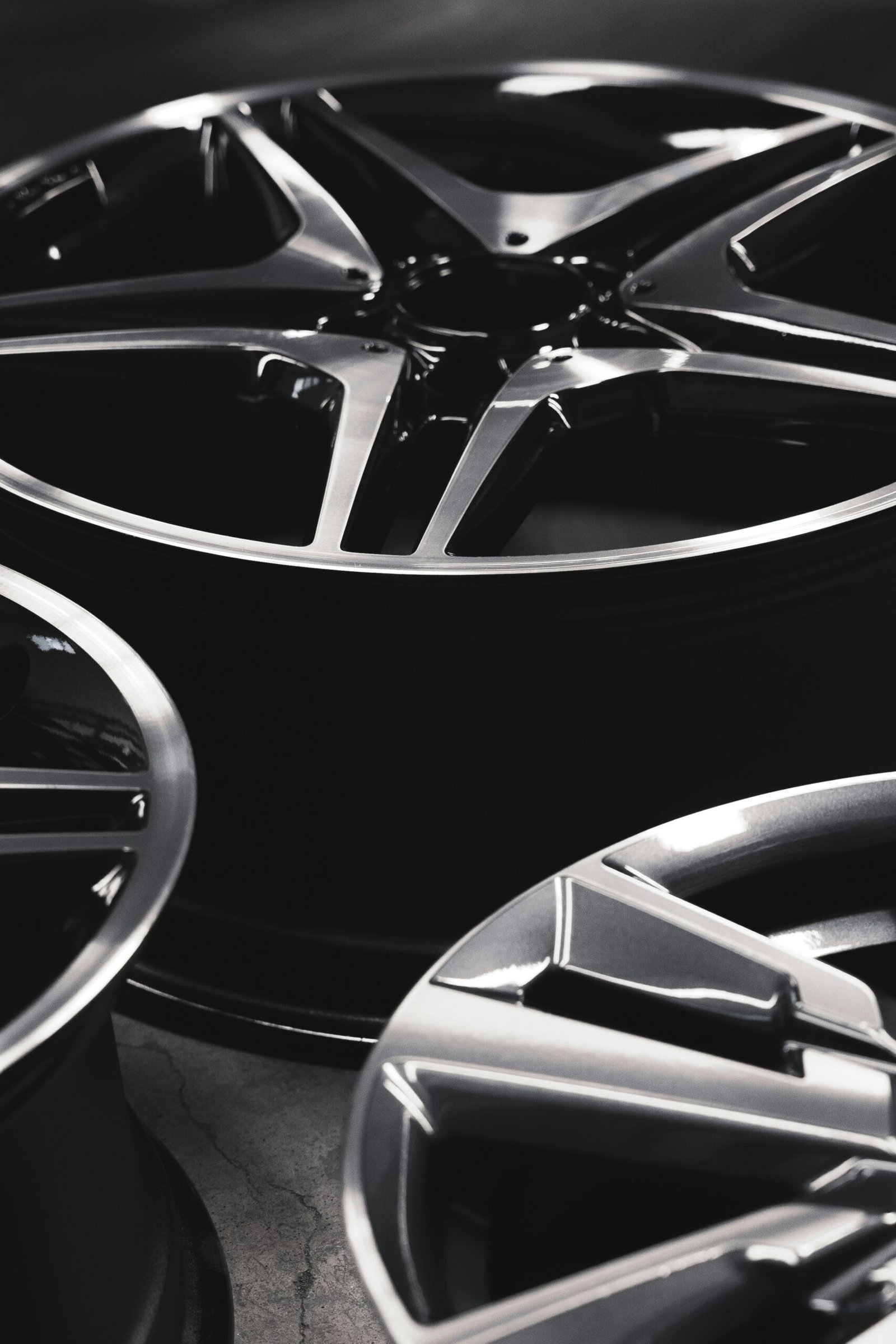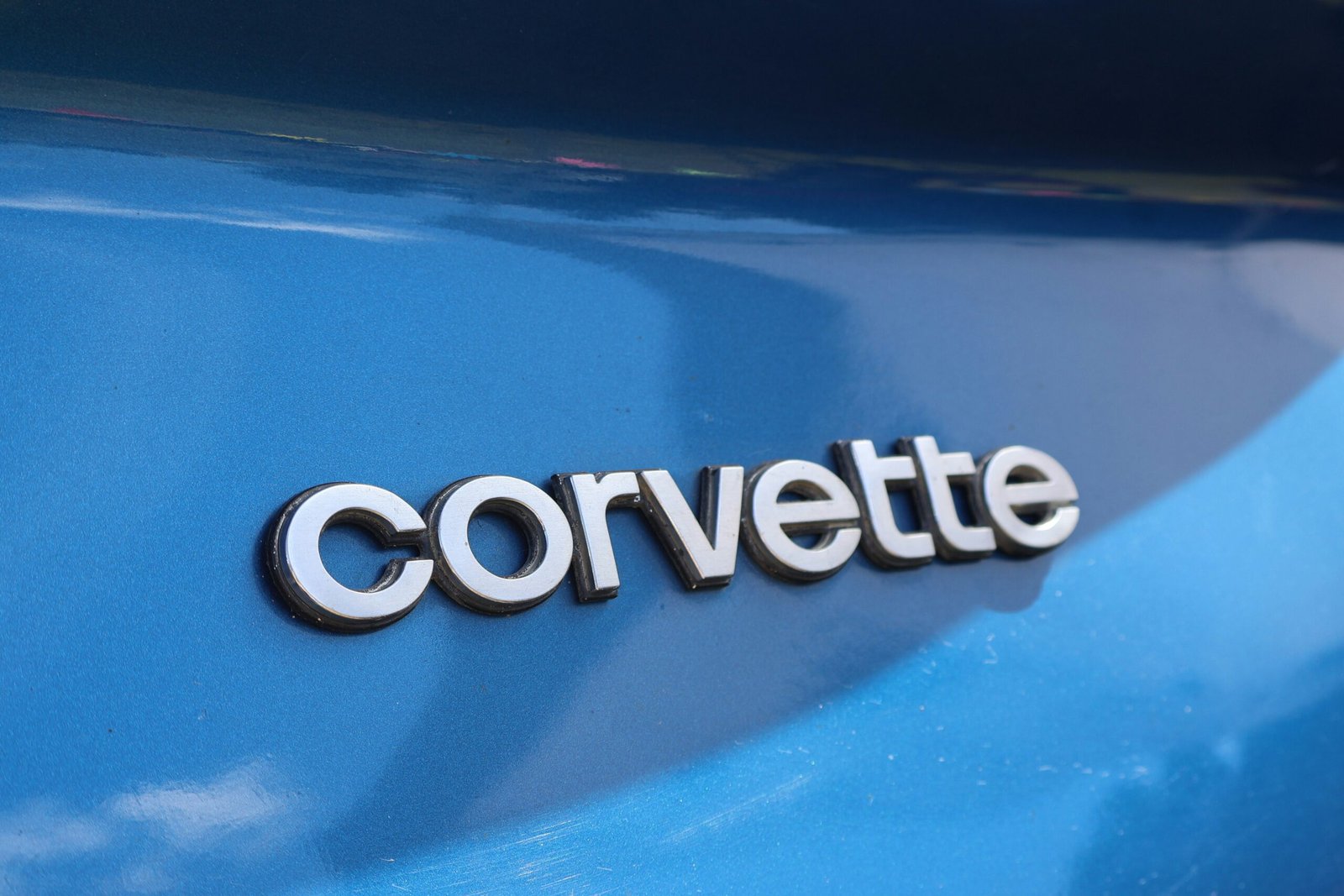Introduction to Classic Car Restoration
Classic car restoration is an engaging and fulfilling endeavor that allows automobile enthusiasts to breathe new life into vintage vehicles. It involves the meticulous process of repairing, renovating, and preserving cars that have historical significance or emotional value. As a hobby, classic car restoration has garnered a substantial following globally, attracting individuals from diverse backgrounds due to the unique challenges and rewards it presents.
The appeal of classic cars lies not only in their aesthetic charm but also in their rich history and the stories they tell. Vintage automobiles represent a bygone era of craftsmanship and innovation, capturing the essence of the automotive culture of their time. Many enthusiasts are drawn to the intricate details and designs that distinguish these cars from modern counterparts, making the restoration process a creative outlet as well as a technical challenge.
Restoring a classic car is more than just a hobby; it can be a deeply satisfying journey. This process enables individuals to develop new skills, such as mechanical repair, bodywork, and painting, all while forging a personal connection with the vehicle. The gratification that comes from seeing a neglected car transform into a stunning masterpiece is often cited as a major motivational factor for enthusiasts. Moreover, the community surrounding classic car restoration is vibrant and supportive, providing a wealth of resources and networking opportunities for novices and seasoned restorers alike.
Before diving into the world of classic car restoration, one should consider whether it aligns with their interests and abilities. Assessing time, budget, and resources is crucial to determining if this endeavor is right for you. Engaging in this rewarding hobby can lead to immeasurable personal growth and lifelong memories centered around both the car and the journey of restoration.
Choosing the Right Classic Car
Selecting the ideal classic car for restoration is a multifaceted process that necessitates careful consideration of various factors. First and foremost is the budget. Restoration projects can vary significantly in cost, with factors such as the initial purchase price, parts availability, and labor expenses affecting the overall expenditure. Beginners should establish a clear budget to avoid potential financial strain, as restoration can often entail unexpected costs.
Next, personal preference plays a crucial role in choosing a classic car. It is important to select a model that resonates with the individual’s tastes and interests, as this ensures ongoing enthusiasm throughout the restoration process. Whether it is a muscle car, vintage sports vehicle, or a classic European model, identifying a preferred genre can simplify the selection process significantly.
Another significant aspect to consider is the condition of the car at the time of purchase. Cars that are in poor condition may require extensive work, while those in better shape may only need minor repairs. Understanding the extent of restoration needed is essential, as this will impact both time and resources. Moreover, the availability of parts can pose challenges; selecting a model with readily accessible replacement parts can simplify the restoration journey and minimize downtimes.
Furthermore, the intended use of the car after restoration must be taken into account. This could range from personal enjoyment and pride in ownership, to investment purposes. If the goal is to resell the car, choosing a model known for its appreciation in value would be wise. Ultimately, weighing these factors carefully will enable newcomers to make a more informed decision in selecting the right classic car for restoration, setting the stage for a rewarding project ahead.
Essential Tools and Equipment for Restoration
Embarking on a classic car restoration journey is both exciting and daunting, particularly for beginners. One of the most crucial aspects of this endeavor is acquiring the right tools and equipment. A well-equipped workshop can significantly enhance the restoration process, ensuring that tasks are completed efficiently and effectively.
At the core of your toolkit should be basic automotive tools, which serve as the foundation for most restoration tasks. Essential items include wrenches, sockets, screwdrivers, pliers, and hammers. These tools enable you to perform standard repairs and adjustments on your classic vehicle. Additionally, investing in a quality jack and jack stands is vital for safely lifting the car, allowing access to the undercarriage for inspections and repairs.
Safety cannot be overlooked during the restoration process. Protective gear, such as gloves, safety goggles, and a dust mask, should be included in your inventory to ensure a safe working environment. Furthermore, an adequate first aid kit is also highly recommended to address any minor injuries that may occur while working.
In addition to these basic tools, some restoration projects may require specialized equipment. For instance, sanders, grinders, and welding equipment may be necessary for bodywork or when dealing with rust. A quality paint sprayer can also be an invaluable asset for achieving a professional finish. It is advisable to research the specific demands of your restoration project, as certain tasks might necessitate unique tools.
To acquire these tools at reasonable prices, consider exploring local classifieds, online marketplaces, and second-hand stores. Tools tend to hold their value, so purchasing used equipment can be a cost-effective alternative. Networking with fellow enthusiasts can also lead to valuable recommendations and potential deals. By gathering the right tools and equipment, you will be well-prepared to tackle your classic car restoration project with confidence.
Planning Your Restoration Project
Embarking on a classic car restoration project is an exciting journey, but it requires careful planning to ensure its success. A well-structured plan will help streamline the restoration process and help enthusiasts manage their time and resources effectively. The first step is to establish a realistic timeline for your project. Consider factors such as the availability of parts, your own schedule, and the extent of the work that needs to be accomplished. Setting a timeline not only provides a target date for completion but also enables you to measure your progress along the way.
Next, creating a budget is crucial. Restoration projects can vary significantly in cost depending on the condition of the vehicle and the quality of materials desired. It is advisable to break down expenses into categories, such as parts, tools, and labor, allowing for a clearer picture of overall spending. There may be unforeseen issues that arise during the restoration, so factoring in a contingency budget of approximately 10-15% of your total budget is wise. This will help accommodate any extra costs that may materialize throughout the process.
Documentation plays a vital role in classic car restoration. Keep a detailed log of each step involved, including photos and notes on what has been completed and what remains. This not only aids in tracking progress but also serves as a reference for potential issues that might arise in the future. Furthermore, organizing tasks can enhance efficiency. Create a priority list of tasks, categorizing them based on urgency and complexity, which will enable you to tackle simpler tasks first while keeping larger projects manageable. By taking the time to plan your restoration project thoroughly, you will lay a strong foundation for achieving your restoration goals successfully.
Understanding the Restoration Process: Step-by-Step
Restoring a classic car is a multifaceted journey that requires attention to detail and a methodical approach. The first step in the car restoration process involves disassembly. During this phase, owners must carefully dismantle the vehicle, cataloging each part for easy reassembly later. It’s crucial to document the condition of components and take photographs, as this can aid in the rebuild. Labels and organized storage can help streamline this initial stage.
Once disassembly is complete, the focus shifts to bodywork. This step may involve sanding down rusted areas, applying body filler to imperfections, and ensuring that the chassis is solid. It is recommended to assess the overall integrity of the body and repair any structural issues before proceeding to painting. Proper surface preparation is vital, as it greatly influences the outcome of the finish. When painting, selecting high-quality materials is essential, particularly for exterior surfaces exposed to weather conditions.
The next phase is interior restoration, which encompasses replacing upholstery, installing new carpeting, and restoring dashboard components. Attention should be paid to authenticity when choosing materials, as many purists prefer original form and function. This stage allows for personalization while still respecting the classic nature of the vehicle.
Mechanical repairs are often overlooked but are equally significant in the restoration journey. Components such as the engine, transmission, suspension, and brakes should be thoroughly inspected. Depending on the condition, parts may need to be rebuilt or replaced. Engaging with experienced mechanics can facilitate this phase, ensuring the vehicle runs smoothly and reliably.
Through each step of the restoration process, patience and planning are key. By maintaining meticulous records and embracing a methodical approach, beginners can navigate the complexities of classic car restoration with greater confidence.
Finding Parts and Resources
Embarking on a classic car restoration project can be an exhilarating journey, but locating the right replacement parts is a crucial step. Various resources are available to assist restoration enthusiasts in sourcing necessary components, each with its unique advantages and challenges. One popular option is online retailers, which specialize in classic car parts. Websites dedicated to this niche often have extensive inventories, allowing restorers to easily search for specific items, compare prices, and read customer reviews to gauge product quality.
Another valuable resource for sourcing parts is salvage yards. These facilities can offer a treasure trove of components at significantly reduced prices. However, the challenge lies in the need for diligent inspection to ensure that the parts acquired are in satisfactory condition. It is advisable to cultivate a rapport with salvage yard operators, who can provide insights into recent arrivals that might be suitable for restoration projects. Furthermore, classic car shows present an excellent opportunity to network with other enthusiasts, showcasing a myriad of vendors specializing in rare parts.
Communities of classic car enthusiasts, both online and offline, can also be instrumental in finding resources. Joining clubs or forums can facilitate knowledge sharing, where experienced restorers can provide recommendations on where to find specific parts or even offer surplus parts for sale. Another critical step is verifying the authenticity and quality of parts. Restoration enthusiasts should consider asking for provenance and documentation when sourcing parts, particularly for high-value components. Researching the supplier’s reputation can safeguard against potential fraud and ensure that the purchased components align with the desired standards of restoration.
By utilizing a diverse range of resources and adopting a diligent approach, individuals venturing into classic car restoration can successfully navigate the intricacies of sourcing the necessary parts for their projects.
Common Mistakes to Avoid in Restoration
Classic car restoration can often be an exhilarating yet challenging adventure, especially for those new to the process. However, a few common mistakes can impede progress and lead to unforeseen complications if not addressed early on. Recognizing these pitfalls can significantly enhance the restoration experience and outcome.
One prevalent mistake among beginners is overspending on parts and services. It is crucial to set a realistic budget and stick to it. Many novice restorers tend to overlook the cumulative costs associated with sourcing parts, hiring specialized labor, and repurposing existing components. To circumvent this issue, it is advisable to conduct comprehensive research and planning before commencing the restoration project. A detailed budget can help track expenses and identify potential financial overruns in a timely manner.
Moreover, underestimating the time required for restoration is a frequent error. Many beginners assume that a classic car restoration will be a straightforward process that can be completed quickly. In reality, unforeseen challenges often arise, leading to extended timelines. It is prudent to allocate ample time for each phase of restoration, including disassembly, evaluation, and reassembly. Adequate time management enables better planning and reduces the risk of burnout.
Another significant oversight is neglecting to document the restoration process. Failing to record key changes and repairs can lead to confusion later on, especially when reassembling components. Additionally, documenting each step serves as a valuable reference for future restorations or repairs. This practice can also add value to the car when it comes time to sell, as potential buyers appreciate a thorough history of the work completed.
Lastly, cutting corners is a temptation that should be avoided at all costs. While the urge to save time and money may be strong, it generally results in compromised quality and increased long-term costs. Instead, prioritize thorough work, even if it means facing temporary delays.
Connecting with the Classic Car Community
One of the most rewarding aspects of classic car restoration is the opportunity to connect with like-minded enthusiasts. Engaging with the classic car community can provide invaluable support and facilitate the sharing of knowledge and experiences. Networking with other enthusiasts can introduce you to crucial information regarding restoration techniques, sourcing parts, and maintenance tips that can significantly aid in your restoration endeavors.
There are numerous ways to connect with fellow classic car lovers. Local clubs are a fantastic starting point. Many cities and towns have car clubs dedicated to various brands or styles of classic cars. These clubs often host regular meetings, cruises, and events, creating a vibrant environment for owners to showcase their vehicles, share restoration experiences, and learn from one another. Joining a local club not only allows for the exchange of information but also fosters friendships and camaraderie among classic car aficionados.
In addition to local clubs, online forums and websites devoted to classic cars are excellent resources for connecting with individuals worldwide. These platforms allow for discussions about specific models, troubleshooting, and advice, enabling you to tap into a wealth of collective knowledge. Many forums feature sections dedicated to restoration projects, and members often share their progress, successes, and challenges, helping you navigate through similar experiences.
Social media groups also play a significant role in the classic car community. Platforms such as Facebook and Instagram host numerous groups where enthusiasts share photos, discuss restoration projects, and promote upcoming events. Engaging with these groups can keep you informed about trends and innovations within the classic car restoration realm. By participating in discussions and sharing your own journey, you can both learn and contribute to the vibrant community, enhancing your overall classic car restoration experience.
Conclusion and Encouragement for Beginners
Restoring classic cars is a passionate endeavor that combines creativity, technical skills, and a dedication to preservation. As we wrap up this exploration into the world of classic car restoration, it is essential to reflect on the key takeaways that will facilitate your journey. First and foremost, patience is crucial. The process of restoring a classic vehicle is often intricate and time-consuming, requiring attention to detail and an understanding that great things take time.
Equipping yourself with knowledge is another vital step. Whether through literature, online resources, or engaging with fellow enthusiasts, the learning process will deepen your appreciation for the craft. Each car restoration project presents a unique set of challenges that serve as valuable learning experiences. By embracing these challenges, you will not only enhance your mechanical skills but also gain a profound connection to the automotive heritage of your chosen vehicle.
It is equally important to enjoy every step of the journey. Each phase of restoration—from initial assessment to the final touches—should be relished. This journey allows you to uncover the rich history behind the classic car, as every restored automobile conveys a story that deserves to be told. As you embark on your restoration adventure, remember that the satisfaction derived from your efforts will be as rewarding as the final product.
For beginners, engaging with local classic car communities can provide invaluable support and encouragement. Sharing insights and learning from the experiences of seasoned restorers fosters a collaborative environment. You are not alone on this journey; seek inspiration from others who have tread the same path. With time, dedication, and an open mind, the road ahead in classic car restoration will undoubtedly lead to remarkable achievements and cherished moments. Embrace the journey, and let your passion drive you forward.



